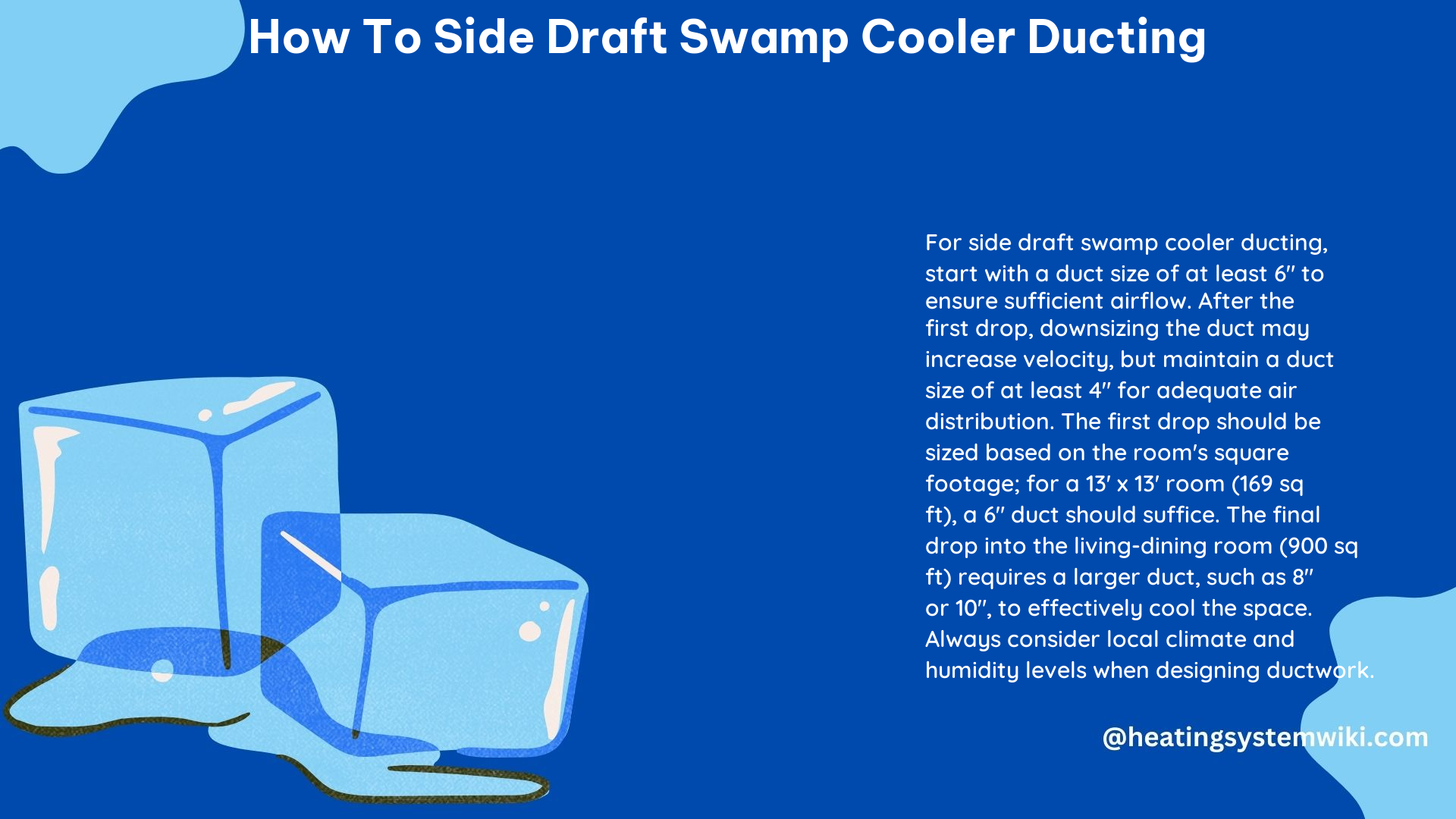A side draft swamp cooler is a type of evaporative cooling system that is mounted on a wall or window, in contrast to a down-draft unit which is located on the roof. These systems work by pushing cold air through a series of hoses to cool the interior of a home. The ductwork routes this cool air directly to the vents inside the house. Properly designing and installing the ductwork is crucial for the efficient operation of a side draft swamp cooler.
Ductwork Materials: Semi-Rigid vs. Flexible
The ductwork for a side draft swamp cooler can be constructed using either semi-rigid or flexible materials. Each option has its own advantages and disadvantages:
| Material | Advantages | Disadvantages |
|---|---|---|
| Semi-Rigid Duct | – More unyielding and durable – Can be bent by hand to form curves without additional support |
– More expensive than flexible duct |
| Flexible Duct | – Less expensive – Can hold its shape without extra support |
– More prone to collapsing or kinking – Not suitable for applications requiring constant flexing |
When choosing between semi-rigid and flexible ductwork, consider the specific needs of your installation. Semi-rigid ducts are better for applications where the ductwork needs to maintain its shape, while flexible ducts are more suitable for navigating tight, obstructed spaces.
Ductwork Size Recommendations

It is recommended to use ductwork larger than 6 inches in diameter for side draft swamp coolers. These systems need to move a large volume of air to effectively cool the interior space, and larger ducts allow for better airflow.
The exact size of the ductwork will depend on the capacity of the swamp cooler and the size of the area being cooled. As a general guideline:
- For a 5,000 CFM side draft swamp cooler cooling a 1,300 sq. ft. area (e.g., bathroom, bedroom, and kitchen), you would need ductwork larger than 6 inches in diameter.
- The ductwork size should be increased for larger swamp coolers or larger cooling areas to maintain optimal airflow.
Avoiding Ductwork Restrictions
While ductwork can be used to distribute the cool air from a side draft swamp cooler, it is important to note that ducting these systems is not always the best approach. Ductwork can restrict airflow and reduce the overall efficiency of the swamp cooler.
Swamp coolers are designed to blow cool air directly into the building, with the warm air being expelled through open windows. Attempting to duct the cool air can lead to several issues:
- Reduced airflow and cooling capacity
- Increased risk of water buildup and potential mold growth in the ductwork
- Compatibility issues with galvanized duct, which can rust quickly due to the high moisture content
To avoid these problems, it is generally recommended to use the swamp cooler without ductwork and ensure that the windows are open in the areas where you want the cool air to circulate.
Maintenance and Cleaning
Proper maintenance of the swamp cooler and its components is crucial for ensuring optimal performance and indoor air quality. It is recommended to clean the cooling pads around once or twice a year, especially after frequent use, to prevent the growth of mold or other allergens that could compromise the air quality.
By following these guidelines for side draft swamp cooler ducting, you can ensure that your system operates efficiently and effectively, providing comfortable cooling for your home.
References:
– Portable Air Conditioner Vented
– Duct Work for Swamp Cooler
– Swamp Cooler Ducting
